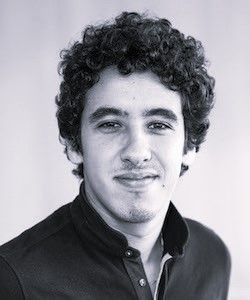
Hamza Kebiri
CIBM SP EPFL-UNIGE Connectomic Imaging Section
Hamza Kebiri received a bachelor’s and master’s degree in Communication Systems from EPFL in 2015, and then pursued a master’s degree in Cognitive Science from Osnabrück University, Germany. In 2017, he was intern in the Connectomics department of the Max Planck Institute for Brain Research in Frankfurt. Under the supervision of Prof. Moritz Helmstaedter, he focused on the segmentation and reconstruction of multibeam scanning electron microscopy (mSEM) data using deep neural networks.
Supported by the SNSF, in 2023 he obtained his PhD in the Life Science program at the University of Lausanne (UNIL) in the Medical Image Analysis Laboratory under the supervision of Prof. Meritxell Bach Cuadra and received the best thesis award in the UNIL Faculty of Biology and Medicine (Prix de Faculté).During his PhD, he worked on super-resolution reconstruction of fetal and newborn brains from diffusion magnetic resonance imaging (dMRI) data. In 2022, he was awarded an SNSF Mobility Grant to work as a visiting scholar on fetal and newborn projects at Boston Children’s Hospital & Harvard Medical School with Prof. Ali Gholipour and Prof. Davood Karimi.
In 2023 Dr. Kebiri joined the CIBM SP CHUV-UNIL Trustworthy Medical Image Analysis section as a senior SNSF researcher working on the project aiming to tackle domain shifts in early developing brains and between high (1.5T & 3T) and low (0.55T) field strengths.Since March 2025, Hamza Kebiri is postdoctoral researcher in the CIBM SP EPFL-UNIGE Connectomic Imaging Section and his current work lies at intersections of functional MRI analysis methods, neuroscience, deep learning and developing brains. His broad research interest encompasses consciousness, neuroscience, brain reconstruction, machine learning, and its applications to medical neuroimaging.
KEYWORDS: machine learning, MRI, image processing, fetal and neonatal populations
- hamza.kebiri@unige.ch
- EPFL Campus Biotech, Chemin des Mines 9, CH-1202 Geneva H4-03-182-048
- https://www.linkedin.com/in/hamza-kebiri-a72b3260/
